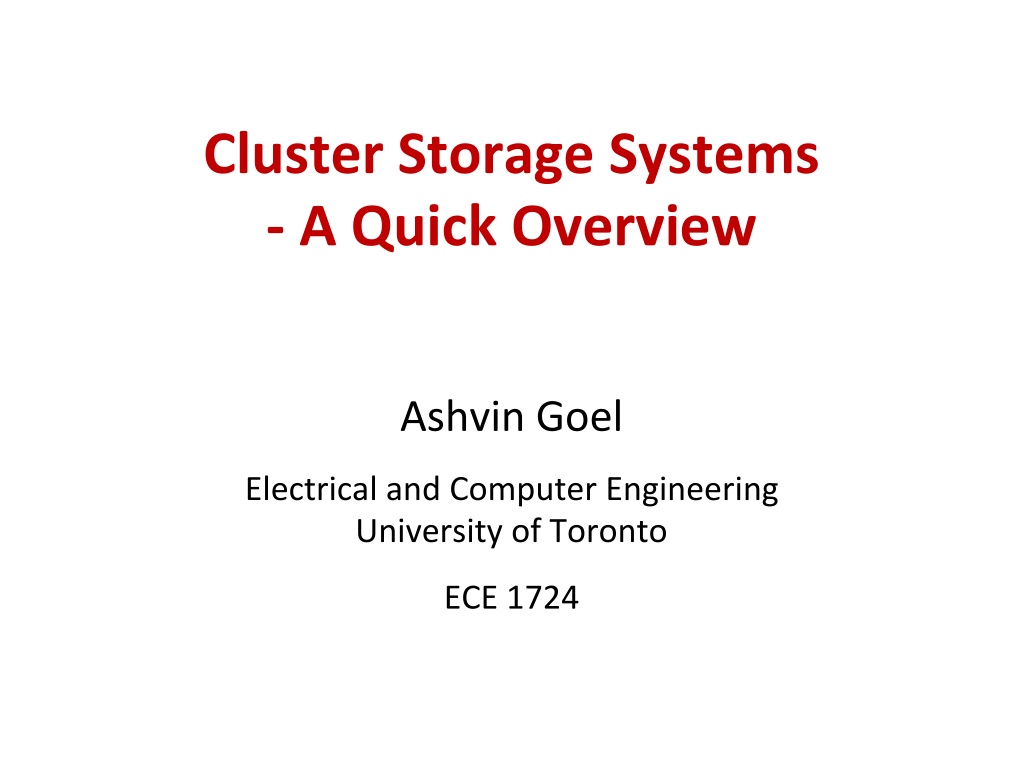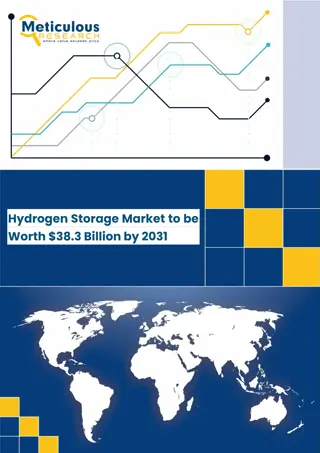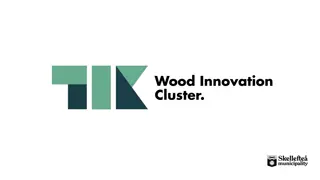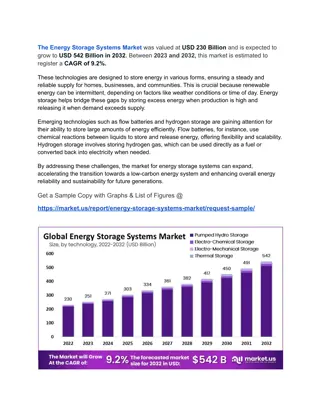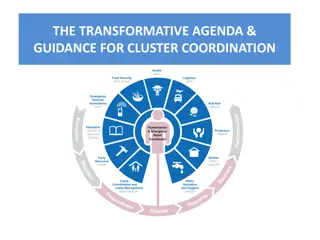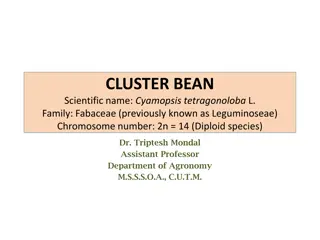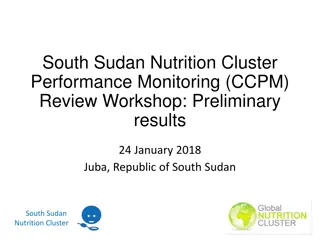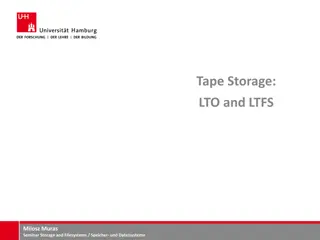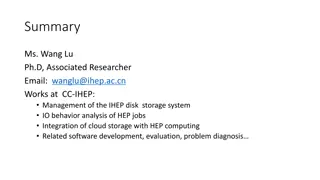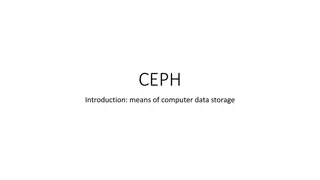Overview of Cluster Storage Systems
Web-scale applications hosted in massive computing infrastructures require scalable storage systems. This overview covers different types of storage systems, including file systems and databases, emphasizing the key design ideas and pros/cons of Google File System (GFS).
Download Presentation

Please find below an Image/Link to download the presentation.
The content on the website is provided AS IS for your information and personal use only. It may not be sold, licensed, or shared on other websites without obtaining consent from the author. Download presentation by click this link. If you encounter any issues during the download, it is possible that the publisher has removed the file from their server.
E N D
Presentation Transcript
Cluster Storage Systems - A Quick Overview Ashvin Goel Electrical and Computer Engineering University of Toronto ECE 1724 1
Web-Scale Apps Applications that are hosted in massive-scale computing infrastructures such as data centers Used by millions of geographically distributed users Via web browsers, mobile clients, etc. Produce, store, consume massive amounts of data Scale is hard to comprehend 2
Storage Systems For the next few weeks, we focus on massive scale storage systems Today, cluster scale storage Next week, strongly consistent storage Following week, wide area storage 3
Type of Storage Systems File systems for unstructured data Databases for unstructured data 4
Scalable File Systems Requirements Bulk storage High throughput Scalable Fault tolerant Key idea for scaling: separate metadata and data operations Metadata is smaller, requires strong consistency for correct file system operation Data is much larger, requires high throughput 5
GFS: Key Design Ideas Goal: use a cluster of machines to provide a scalable storage pool Metadata server Use single node for ensuring metadata consistency Manage replication (replica placement, load balancing, etc.) Replicate operation logs for fault tolerance Avoid performing any data operations Data servers Shard files across multiple servers Support file appends efficiently Provide weak data consistency guarantees 6
GFS: Pros, Cons Pros Can handle massive data and massive objects scalably Works well for large sequential reads/writes Simple, robust reliability model Cons Metadata server can be bottleneck, single point of failure Sharding the namespace, replicating the server is feasible Weak consistency guarantees Linearizability for single chunk writes (not for cross-chunk writes) Stale chunk reads possible Duplicate and inconsistent data can be read Small reads, overwrites are expensive 7
Questions to Keep in Mind Which file system X have we seen until now? What are the differences between GFS and X? When should you use X and when GFS? Is there any synergy between the two? How does GFS provide fault tolerance? What fault tolerance method(s) Y have we seen? What are the similarities/differences between GFS s fault tolerance method and Y? What are the consistency guarantees provided by GFS? Why provide these guarantees? 8
Scalable Databases Requirements Bulk storage High throughput Scalable Fault tolerant Structured data, data locality Random accesses Low latency Some consistency 9
Bigtable: Key Design Ideas Goal: use a cluster of machines to provide a scalable, shared-nothing database Master server Use single node for locating data servers, and for database schema operations (create table, column families, etc.) Use a coordination server for leader election, configuration management, storing location information, schema metadata Avoids performing any data operations Data servers 10
Bigtable: Key Design Ideas Goal: use a cluster of machines to provide a scalable, shared-nothing database Master server Data servers Flexible row format (unbounded number of columns) Fine-grained sharding of tables (in row ranges) across servers Provide low latency access by using read and write optimized data structure (LSM store) Use multi-versioning for concurrent access Use GFS for storage and replication Co-located with GFS servers for locality 11
Cloud-Scale Storage Requirements Modern web applications need to support both Fast indexed reads, scan operations (search) High-throughput updates (inserts) 12
Storage Options Sorted array search: O(log(n)) insert, very slow: O(n) Tree structures, e.g., Btrees search: O(log(n)) insert: O(log(n)) Log search, very slow: O(n) insert: O(1) 13
Write-Optimized Storage Tree structures, e.g., Btrees search: O(log(n)) insert: O(log(n)) Log search, very slow: O(n) insert: O(1) Can we design a structure that improves on the insert performance of Btrees, without sacrificing on search? 14
Log-Structured Merge (LSM) Trees Combine logging with a tree Write: All data (key, value) is initially written to an in- memory table called memtable Log: memtable is periodically written sequentially to an on- disk table called sstable Performance: insert: O(1) search: O(???2(n)) Merge: sstable is periodically merged into a sorted tree of sstables using immutable operations 15
16 Bigtable: Pros, Cons Pros Can handle massive data and massive objects scalably Supports low-latency access for small data sizes Supports tables with thousands of columns efficiently Allows applications to ensure data locality Cons Weak consistency model (row-level atomic updates) Generally sufficient for many applications Very large objects cause significant write amplification Time series data, e.g., logs organized by time-stamps can cause write hotspots 16
Questions to Keep in Mind Bigtable is called a NoSQL database What are the differences between a NoSQL database and a traditional database? What are the benefits of NoSQL databases? What are the most significant differences between GFS and Bigtable? In terms of workloads In terms of system architecture 17
